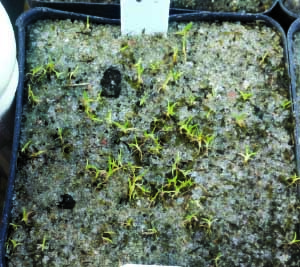Controlling dinitroaniline resistant goosegrass in turf
Prodiamine is a dinitroaniline (DNA) herbicide that is widely used in turfgrass management for preemergence weed control. However, overuse of prodiamine has increased the spread and establishment of weeds resistant to DNA herbicides. Goosegrass is a particularly problematic weed that has developed resistance to prodiamine and other DNA herbicides in the southern U. S., and turf managers may need to rotate herbicides with different modes of action in order to control these DNA-resistant biotypes.
Research was conducted at the University of Georgia to evaluate resistance levels to prodiamine for a susceptible goosegrass compared to a suspected resistant biotype from Griffin, Ga. Field experiments were also conducted to evaluate efficacy of preemergence herbicides with different modes of action for control. In greenhouse experiments, prodiamine rates required for 50% control of DNA-resistant goosegrass was >32x greater than susceptible biotypes.

Initial germination of DNA-resistant and susceptible goosegrass biotypes following an application of Barricade (prodiamine) at 1.5 lbs. a.i./acre in a greenhouse experiment at the University of Georgia. Photo: Patrick McCullough
In field experiments, sequential applications of Dimension (dithiopyr) and Barricade (prodiamine) provided <20% control of the resistant goosegrass over 2 years. A single application of Tower (dimethenamid) provided <50% goosegrass control in 2011, but provided excellent control (>90%) in 2012. Single and sequential applications of Specticle (indaziflam) provided >90% control of DNA-resistant goosegrass in both years, while Ronstar (oxadiazon) provided >85% control. Single and sequential Dismiss (sulfentrazone) applications controlled goosegrass <60% in 2011, but averaged 94% control in 2012.
If resistance to DNA herbicides is suspected in goosegrass populations, indaziflam and Ronstar may be good choices to consider for preemergence control. Dimethenamid and sulfentrazone may also control DNA resistant goosegrass, but efficacy may be inconsistent.
Patrick McCullough, Ph.D., is a turfgrass weed specialist at the University of Georgia and Diego Gómez de Barreda, Ph.D., is an associate professor at the Polytechnic University of Valencia, Spain; and Jialin Yu is a graduate assistant at the University of Georgia. Patrick McCullough can be reached at pmccull@uga.edu for more information.









